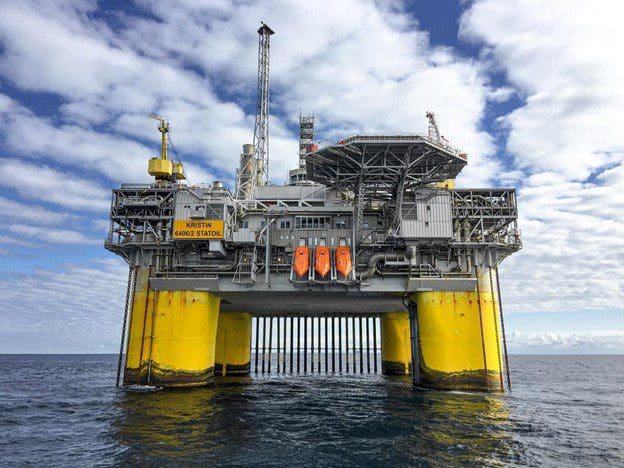The oil and gas industry is constantly changing and evolving with the global economic trends, socio-political shifts, and market tendencies. Through accurate forecasts and predictive analytics, business leaders in the sector are able to prepare for market shifts and align their operations and processes to avoid losses and capitalize on the opportunities about to hit the market. Now that oil and natural gas are poised for growth in the U.S., it’s important for business leaders to maximize the potential of the companies and act on the trends that could take their ventures to new heights.
In 2021, we can expect oil and gas to undergo a dramatic shift towards greater digitalization and sustainability, but also damage control due to the effects of the COVID-19 pandemic. Better asset management through IoT systems and greater efficiency with robotics, along with the rise of online marketplaces for oilfield equipment are all trends that industry leaders will need to stay on top of in order to retain their competitiveness.
Let’s take a look at the five key trends that will shape the sector in 2021.
Utilizing Digital Transformation
Digitization is one of the leading trends that has been reshaping the oil and gas industry over the past decade, and it will continue to lead the sector forward in 2021. With technological advancement comes the need for business leaders to champion the adoption of more innovative software solutions that facilitate better decision-making, operational efficiency, systems management, intuitive asset upkeep, and much more.
Likewise, digital transformation facilitates big data analytics driven by AI systems that allow oil and gas companies to collect and collate vast amounts of industry data quickly. This creates a healthy ecosystem where information is organized and utilized quickly to generate accurate predictions and take companies in the right direction. With AI-driven reporting and data science, business leaders can retain agility and flexibility for their companies as well, being able to adapt to sudden industry shifts at a moment’s notice.
Sustainability is Leading the Way
In a world that is rapidly shifting its efforts towards conservation and preservation on a global scale, the oil and gas industry needs to adapt quickly. Now that environmentalism has become a hot topic and that governments are actively investing in eco-friendly changes and incentivizing the private sector to do the same, business leaders in oil and gas need to follow suit, or risk losing business.
However, it’s not just about adopting green solutions to help safeguard the environment, it’s also about ensuring sustainability for the sector and their businesses. Sustainable development will remain the key growth pillar for oil and gas companies across the globe.
With the right hardware and software technologies, businesses can cut needless expenditure and improve operational efficiency to elevate safety, prompt growth, and appease the public. The goal is not only to ensure the survival of the industry in an ever-changing eco-conscious world, but also to appeal to the public eye through the adoption of sustainable practices.
The Rise of the Online Marketplace
Global connectivity has transformed many industries around the world and has prompted the creation of B2B and B2C online marketplaces in almost every sector. In recent years, the oil and gas industry has been moving towards online trade as well, and nowadays business leaders are able to procure quality oilfield equipment from manufacturers all over the world through the oil and gas B2B marketplaces.
This is a dramatic shift in the industry that allows companies to access top-quality products with ease from various manufacturers and brands, which was difficult to achieve before. With the opening of global marketplaces around the web, we can expect oil and gas companies to become much more flexible and agile, and their supply chains to become stronger in the years to come.
Skill Shortages and Labor Costs
One of the key problems that this sector keeps facing is the apparent shortage of skilled workers, as many younger generations are gradually moving towards clean energy and sustainable industries. This doesn’t mean that companies are struggling to find talented workers, but it is something that business leaders need to keep in mind for the road ahead.
The current oil and gas workforce is aging, so companies need to find ways to attract younger talent. This is causing an increase in labor costs as business leaders are raining financial incentives to appeal to the modern job-seekers, along with more benefits and perks. What’s more, with more sophisticated technologies requiring a more nuanced skillset and human oversight, it’s only natural that the salaries for these positions are going to rise in 2021 and beyond.
Leveraging Additive Manufacturing
Finally, additive manufacturing, more popularly known as 3D printing is being rapidly adopted around the world. The oil and gas sector is also pioneering the integration of additive manufacturing into their processes, as the technology has the potential to bring higher efficiency to the sector.
Business leaders in oil and gas have the opportunity to expand their operations with 3D printing technology, and utilize it to build more complex prototypes and execute designs more quickly than ever before. Through 3D printing and its adoption across the sector, oil and gas companies can boost innovation in parts manufacturing and design to lower assembly time, reduce emissions, and reduce operational complexity.
Wrapping Up
The oil and gas industry is changing and evolving every year, which is a must if the sector is to survive and grow in the decades to come. In 2021, these trends will help guide business leaders towards better decision-making, and pave the road to sustainable growth and business development.
Chloe Taylor is a journalist from Adelaide, Australia.
Oil and gas operations are commonly found in remote locations far from company headquarters. Now, it's possible to monitor pump operations, collate and analyze seismic data, and track employees around the world from almost anywhere. Whether employees are in the office or in the field, the internet and related applications enable a greater multidirectional flow of information – and control – than ever before.





